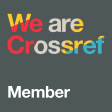Creativity in the educational context: training skills
DOI:
https://doi.org/10.51302/tce.2019.289Keywords:
education, talent, capacity, trainingAbstract
The creativity has become an indispensable phenomenon in education for long time. As everything that emerges impulsively, it has become an essential factor in learning processes. Creativity has been attributed the role of guru, since it has become the solution of the abilities, skills and abilities that must be provided to students. This work tries to emphasize fundamentally the importance of the creativity, although, it is necessary to develop it in a suitable context and environment. It does not serve simply to say «creativity is made», but it is important to explain «how it is done» and «what it is done for». Therefore this article is a critical reflection on this need that is creativity, something that has become a phenomenon within our educational system. On the other hand, undoubtedly, education needs creativity, not everything shown as creativity is creativity. Currently there are many critics of educational learning models because they say that the school kills creativity, as well as there are others contrary to this opinion.
Downloads
References
Amabile, T. (1996). Creativity in Context. Boulder, CO: West view Press.
Amabile, T. (2012). Componential Theory of Creativity. Boston: Harvard.
Armstrong, T. (2006). Inteligencias múltiples en el aula. Barcelona: Paidós.
Bono, E. de. (1999). El pensamiento creativo: el poder del pensamiento lateral para la creación de nuevas ideas. México: Paidós.
Clifford, S. (2016). Cultivating Creativity in Education, Nimega: Radboud University.
Csikszentmihalyi, M. (1998). Creatividad: el fluir y la psicología del descubrimiento y la invención. Barcelona: Paidós.
Csikszentmihalyi, M. (1999). Implications of a systems perspective for the study of creativity. En R. J. Sternberg (Ed.), Handbook of Creativity (pp. 16-34). Cambridge: Cambridge University Press.
Ericsson, K. A. (2008). Deliberate practice and the acquisition and maintenance of expert performance: a general overview. Academic Emergency Medicine, 15(11), 988-994. doi: https://doi.org/10.1111/j.1553-2712.2008.00227.x.
Ericsson, A. y Pool, R. (2016). Peak: Secrets from the New Science of Expertise. London: Bodley Head.
Ferrando, M., Ferrándiz, C., Bermejo, M.ª R., Sánchez, C., Parra, J. y Prieto, M.ª D. (2007). Estructura interna y baremación del test de pensamiento creativo de Torrance. Psicothema, 19(3), 489-496.
Gardner, H. (1987). Estructuras de la mente: la teoría de las múltiples inteligencias. México: Fondo de Cultura Económica.
Gardner, H. (1995). Mentes creativas: una anatomía de la creatividad. Barcelona: Paidós.
Gardner, H. (2011). Mentes líderes. Barcelona: Paidós.
Gardner, H. (2012). Inteligencias múltiples: la teoría en la práctica. Barcelona: Paidós.
Getzels, J. y Jackson, P. W. (1962). Creativity and Intelligence: Explorations with Gifted Students. New York: Wiley.
Guilford, J. P. (1950). Creativity. American Psychologist, 5(9), 444-454.
Guilford, J. P. (1988). Some changes in the structure of intellect model. Educational and Psychological Measurement, 48, 1-4.
Klimenko, O. (2008). La creatividad como un desafío para la educación del siglo XXI. Educación y Educadores, 11(2), 191-210.
Kris, E. (1952). Psychoanalytic Exploration in Art. New York: International University Press.
Landau, E. (1987). El vivir creativo: teoría y práctica de la creatividad. Barcelona: Herder.
Lowenfeld, V. (1989). El niño y su arte. Buenos Aires: Kapelusz.
Lowenfeld, V. (1992). Desarrollo de la capacidad creadora. Buenos Aires: Kapelusz.
Lowenfeld, V. y Lambert Brittain, W. (1947). Creative and Mental Growth. New York: Macmillan.
May, R. (1977). La valentía de crear. Buenos Aires: Emecé.
Maslow, A. (1994). La personalidad creadora. Barcelona: Kairós.
Mednick, S. (1962). The associative basis of the creative process. Psychological Review, 69, 220-232.
Parnes, S. (1967). Creative Behaviour Guidebook. New York: Charles Scribner’s Sons.
Robinson, K. (2009). The Element: How Finding Your Passion Changes Everything. London: Viking.
Torrance, E. P. (1965). Educación y capacidad creativa. Madrid: Marova.
Torrance, E. P. (2003). Orientación del talento creativo. Buenos Aires: Troquel.
Torrance, E. P. y Myers, R. (1996). La enseñanza creativa. Madrid: Santillana.
Torre, S. de la. (2009). Adversidad creadora: teoría y práctica del rescate de potenciales latentes. Revista Encuentros Multidisciplinares, 31, 6-20.
Valero-Matas, J. A., Valero-Oteo, I., Coca, J. R. y Leyva, A. L. (2016). Creatividad y educación para el siglo XXI desde una perspectiva sociológica. RIPS: Revista de Investigaciones Políticas y Sociológicas, 15(2), 201-222. doi: http://dx.doi.org/10.15304/rips.15.2.3473.
Downloads
Published
How to Cite
Issue
Section
License
Copyright (c) 2019 Jesús Alberto Valero Matas

This work is licensed under a Creative Commons Attribution-NonCommercial-NoDerivatives 4.0 International License.


























